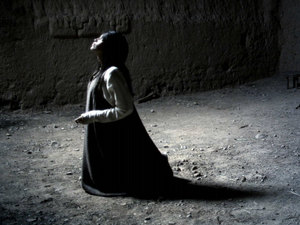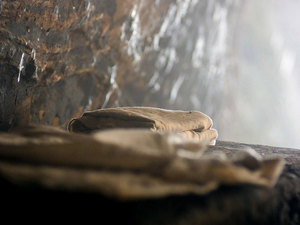Do you realize that the life of Jesus Christ on earth began with a miracle and ended with a miracle? The first, the virgin birth, no one could prove. The second, the resurrection from the dead, was so widely attested that only the most skeptical could doubt.
 Ordinarily, only a mother could claim virginity, for no one else could really know. But in Mary's case, no less than the angel Gabriel backed up her claim (Luke 1:26-34). That didn't stop the tongues from wagging even after Jesus' death with accusations that he was born of an illicit union between Mary and a Roman soldier named Panthera. More benign, but equally wrong, was the charge that he was indeed the carpenter's son.
Ordinarily, only a mother could claim virginity, for no one else could really know. But in Mary's case, no less than the angel Gabriel backed up her claim (Luke 1:26-34). That didn't stop the tongues from wagging even after Jesus' death with accusations that he was born of an illicit union between Mary and a Roman soldier named Panthera. More benign, but equally wrong, was the charge that he was indeed the carpenter's son.
The life that began with a miracle and ended with a miracle became a ministry filled with miracles. From turning water into wine at Cana in Galilee, to several miracles of healing the sick, to the feeding of 5,000, then of 4,000, to walking on the water, to cleansing ten lepers, to raising Lazarus from the dead, Jesus' ministry was filled with miracles. Though some scholars count forty miracles, most agree that Jesus performed thirty-seven miracles or approximately one per month for the three years of his ministry. All the miracles were impressive to those who witnessed them, but sometimes explained away by those who only heard about them.
 Two weeks from tomorrow many will celebrate Easter Sunday marking the resurrection of Jesus from the grave and foretelling the time "when all who are in their graves will hear his voice and come out..." (John 5:28). As we look forward to that day, we remember that first day of the week, while it was still dark, when Mary Magdalene went to the tomb where Jesus had been buried just three days before. Finding the stone rolled away, she ran to tell Peter and John, and the story of resurrection began to unfold (John 20:1-18).
Two weeks from tomorrow many will celebrate Easter Sunday marking the resurrection of Jesus from the grave and foretelling the time "when all who are in their graves will hear his voice and come out..." (John 5:28). As we look forward to that day, we remember that first day of the week, while it was still dark, when Mary Magdalene went to the tomb where Jesus had been buried just three days before. Finding the stone rolled away, she ran to tell Peter and John, and the story of resurrection began to unfold (John 20:1-18).Belief in the resurrection is often the tipping point for people who find much to admire in Christianity, but simply cannot accept the reality of resurrection. One of my favorite contemporary preachers and writers, Timothy Keller, tells skeptics they can't have it both ways:
If Jesus rose from the dead, then you have to accept all he said; if he didn't rise from the dead, then why worry about any of what he said? The issue on which everything hangs is not whether or not you like his teaching but whether or not he rose from the dead.
Unlike the virgin birth, a claim known for sure by Mary and Gabriel, the resurrection had many witnesses:
For what I received I passed on to you as of first importance: that Christ died for our sins according to the Scriptures, that he was buried, that he was raised on the third day according to the Scriptures, and that he appeared to Peter, and then to the Twelve. After that, he appeared to more than five hundred of the brothers at the same time, most of whom are still living, though some have fallen asleep. Then he appeared to James, then to all the apostles, and last of all he appeared to me also.... (1 Corinthians 15:3-8).
 This is an impressive list of witnesses to the resurrection, and we would do well to remember that many of them suffered persecution and death because of their testimony. Blaise Pascal, the seventeenth century philosopher and mathematician, realized that some witnesses are more believable than others when he said, "I believe those witnesses who get their throats cut."
This is an impressive list of witnesses to the resurrection, and we would do well to remember that many of them suffered persecution and death because of their testimony. Blaise Pascal, the seventeenth century philosopher and mathematician, realized that some witnesses are more believable than others when he said, "I believe those witnesses who get their throats cut."
Witnesses to the resurrection put their lives on the line to tell us they believed in this most unbelievable miracle: Jesus is risen; he is risen indeed!
Images courtesy of freebibleimages.com. Used by permission.












Comments
Have thoughts on this article? Leave a comment